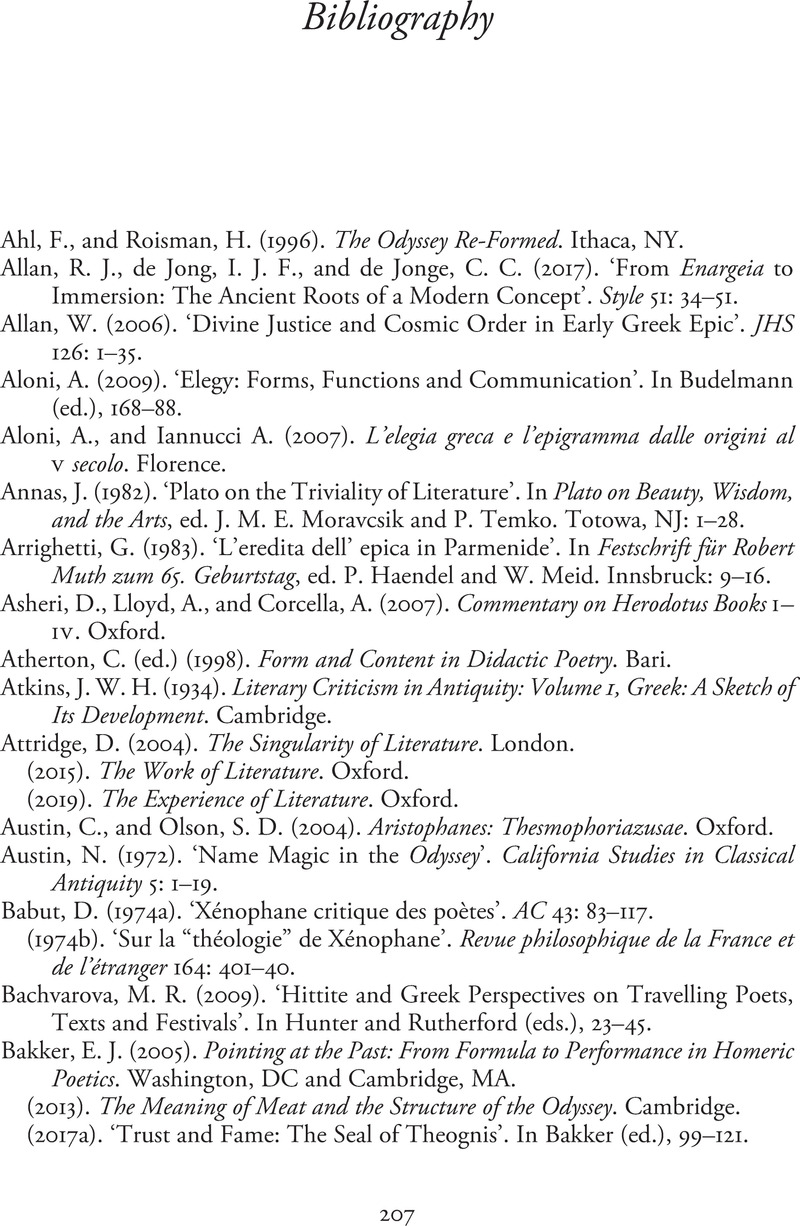 Poetry and Poetics in the Presocratic Philosophers
Poetry and Poetics in the Presocratic Philosophers Book contents
- Poetry and Poetics in the Presocratic Philosophers
- Poetry and Poetics in the Presocratic Philosophers
- Copyright page
- Dedication
- Contents
- Acknowledgements
- Abbreviations
- Note on Fragment Numbers
- Introduction
- Chapter 1 Xenophanes
- Chapter 2 Parmenides
- Chapter 3 Empedocles
- Conclusion
- Epilogue: The Legacy of Presocratic Poetics
- Bibliography
- Index
- References
Bibliography
Published online by Cambridge University Press: 05 April 2021
- Poetry and Poetics in the Presocratic Philosophers
- Poetry and Poetics in the Presocratic Philosophers
- Copyright page
- Dedication
- Contents
- Acknowledgements
- Abbreviations
- Note on Fragment Numbers
- Introduction
- Chapter 1 Xenophanes
- Chapter 2 Parmenides
- Chapter 3 Empedocles
- Conclusion
- Epilogue: The Legacy of Presocratic Poetics
- Bibliography
- Index
- References
Summary

- Type
- Chapter
- Information
- Poetry and Poetics in the Presocratic PhilosophersReading Xenophanes, Parmenides and Empedocles as Literature, pp. 207 - 235Publisher: Cambridge University PressPrint publication year: 2021
